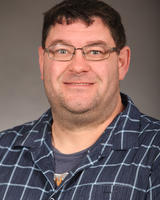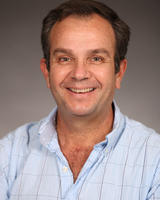
The Amazing Brain and How it Strives to Fight Off Dementia and Injuries
The >500,000 gigabyte hard drive floating in your skull is a huge challenge to study, the brain being the most complicated memory-encoding machine known. In the Bahr Lab, researchers maintain brain explants in culture for months to investigate vulnerable neuronal connections that are responsible for learning, memory, and creativity. Bahr’s team focuses on synaptic vulnerability that contributes to dementia risk factors, thereby improving our understanding of the synaptopathy initiated by seizure- and stroke-type excitotoxicity, TBI, military blast exposures, and brain aging – all linked to elevated risks of dementia. The research integrates explant models with transgenic animal models to study different dementias, using cell signaling, bioinformatics, and drug design methods to determine pathogenic cascades involved and to identify repair mechanisms and therapeutic strategies against the mild cognitive impairment (MCI) to dementia continuum.
Brief Bio: Dr. Bahr is the William C. Friday Chair and Professor at UNCP. His Ph.D. in chemistry from University of California–Santa Barbara identified a target for the diagnosis of Alzheimer’s disease, the most common form of dementia. His postdoctoral training was at the Center for the Neurobiology of Learning and Memory, University of California–Irvine. He has presented his team’s research in 18 countries, has over 150 publications and patents, and leads UNCP as a partner institution of the Duke-UNC Alzheimer’s Disease Research Center. His honors include several mentoring awards for his work with postdocs, graduate students, and invaluable undergraduate researchers who received NSF, Glaxo Women in Science, NCBiotech, and NC Space/NASA Grant Scholarships, NIH RISE Fellowships, NCBiotech Internships, and the Timothy Ritter and Marie Amero Endowed Research Scholarship.

Dr. Jeffrey Beasley
Marion F. Bass Distinguished Professor
Marion F. Bass Endowed Professor of Agriculture
Dr. Jeffrey Beasley is the Marion F. Bass Endowed Professor of Agriculture in the Department of Biology at UNC Pembroke. He joined UNCP in November 2023 and looks forward to the opportunity to bring his experiences in agriculture to the students of UNCP and citizens of the surrounding areas of Robeson County.
Jeffrey was born and raised in Greenville, North Carolina, before leaving the state to begin his academic and professional journey with graduate degrees in Crop Science from Virginia Tech and in Natural Resource and Environmental Sciences at the University of Illinois, before accepting a position as an assistant professor in the School of Plant, Environmental, and Soil Sciences at Louisiana State University. During his seventeen years at LSU, Jeffrey was involved in many aspects of agriculture including teaching, research, and extension activities. He not only taught various agriculture courses, but he was instrumental in the modernization of the LSU horticulture undergraduate teaching curriculum where he led efforts to develop a new concentration in medicinal plants. He believes undergraduate education is the bedrock for institutions of higher learning.
Jeffrey’s initial research activities at LSU helped the United States Army Corp of Engineers strengthen the New Orleans Metropolitan Area Hurricane and Storm Damage Risk Reduction System in the aftermath of Hurricane Katrina. His research examined establishment protocols for soft armoring levees with vegetation. These efforts led to cooperative research with Colorado State University evaluating innovative technology to reduce erosion from wave overtopping, a damaging force that leads to levee failures. Since his early work, Jeffrey has evolved his research to investigate best management practices (BMP) and/or sustainable alternatives in fertility of various plant species. This has led to a range of projects with various collaborators that have included: developing BMP during establishment for runoff prone areas, evaluating organic fertilizers as alternative nutrient sources, using black soldier fly as method for waste reduction as well as waste reutilization, evaluation of drones equipped with light detection and ranging (LIDAR) for use in agricultural fields, and developing environmental practices to retain nutrients onsite.
One of Dr. Jeffrey Beasley’s major efforts at UNCP will be to increase undergraduate student participation in agricultural research. As someone who has mentored over fifty undergraduates and fifteen graduate students, he has come to believe many students are intimidated by the idea of research. Students believe they are not up to the task of conducting their own research projects, and they struggle to start. What he plans to do is take students’ inquisitive nature and help them develop simple questions from which they can conduct meaningful research. Students will not only gain an appreciation and understanding for the research process, but more importantly students will become empowered and confident contributors. This will open doors to students looking to go right to work upon graduation or being competitive for acceptance into regional Land Grant institutions for furthering their education in agriculture. He expects that over time these experiences with UNCP undergraduate students will lead to students sharing their experiences in the surrounding community through demonstrations at the Deep Branch Facility and to mentoring K-12 students to support their interests in agriculture.
Outside of the office, Jeffrey enjoys spending time with his wife, Kendall, two daughters, Lily and Lottie, and dog and three cats. He really missed the wide array of outdoor opportunities North Carolina provides from the coast to the mountains. On breaks from UNCP, Jeffrey can be found making his way west to partake in hiking and water sports or simply relaxing at his home, working in the yard, or tinkering in his shop.

Dr. Kaitlin Campbell
Associate Professor & Assistant Chair
Entomology and Restoration Ecology
My primary research interests include biodiversity, entomology, community ecology, restoration ecology, agroecology, and community engagement. Two areas of research that I am currently working on include the role of habitat enhancement on pollinator diversity (bees, butterflies, hoverflies) and the role of ants as indicators of restoration success and regulators of biodiversity in above- and belowground systems. I also study mites that use ants for dispersal because it allows me to ask questions spanning multiple hierarchical levels including: host, colony, colony neighborhood, patch, and landscape levels. I am involved in several ongoing, collaborative projects including: 1) pollinator gardens and their effects on pollinator communities, 2) flower preference and use by pollinators, 3) effects of an invasive shrub and deer on ant biodiversity, 4) the role of plant diversity and structure on ant biodiversity, 5) effects of fire ants on above- and belowground systems, and 6) pest and disease management in organic crops. I welcome undergraduates into my lab who are also interested in the ecology of “the little things that run the world.”

Dr. Courtney Carroll Alexander
Assistant Professor
Age-related and Neurodegenerative Disorders
My primary research interest is in the field of aging and age-related disorders. I seek to better understand why organisms age and how the aging process increases susceptibility to certain diseases. My current work uses the nematode model C. elegans to address these fundamental issues in biology. I have several projects in the lab:
- Investigating the role of small heat shock proteins in aging and age-related neurodegenerative disorders
- Describing the relationship between protein homeostasis and aging in various tissues, including the nervous and muscular systems
- Exploring the effect of natural products on the lifespan and health-span of C. elegans
I am excited to start my research lab at UNCP and look forward to working with students.

Dr. Rita Hagevik
Professor and Director of Graduate Programs in Science Education
Science Education and use of Sustainable Gardens and Outdoor Spaces to Engage in STEM
In the 21st Century, teachers will need to prepare students who have a well-developed knowledge of science, technology tools, and can collaborate and think to solve problems. Knowledge building classrooms that are student centered and allow students to engage in meaningful science will be critical. Students will argue and discuss information, develop theories, and communicate their understandings to a wider audience regularly. Teachers will need to teach students to think in scientifically responsible ways and to understand science from a local as well as a global perspective. Their society will be pluralistic and multifaceted. One technology tool used commonly by the science community holds promise for teachers and students to engage in this type of teaching and learning. The research report Learning to Think Spatially (National Research Council, 2006) states that geospatial technologies (GT) have the potential to facilitate learning across a range of subjects, supporting interdisciplinary and multidisciplinary learning in schools. Using GT tools, teachers and students can become involved in what scientists and other STEM professionals do every day. I have been using, Google Earth, ArcGIS Online, iPads, and Apps along with augmented reality, to study how through participation and social construction of knowledge and an understanding of context and culture, teachers and students learn about STEM and develop identities to support the likelihood of them entering STEM careers. Through a shared and situated learning experience, discourse, and reflection, we can communicate our understandings with others using technologies such as storymaps and map journals. Generally, my research is on using the out-of-doors, particularly sustainable gardens, along with new technologies to encourage the learning of STEM through a socioscientific argumentation approach. My methodology is mixed methods and overall my research focuses on sustainability, creating sustainable communities, and engaging youth and undergraduate students in STEM to develop STEM identities and support them as they enter STEM careers.

Dr. Sean Hitchman
Assistant Professor
Aquatic Ecology
I am a broadly trained aquatic ecologist specializing in species-habitat relationships in both freshwater and marine ecosystems. As an ecologist, I am concerned with two realities: the impact humans have had on aquatic ecosystems and the overwhelming decrease of aquatic biodiversity. My research can be classified into three general areas:1) Evaluation of patterns and processes regulating fish species/communities and overall diversity in marine and freshwater ecosystems; 2) Effects of anthropogenic (human-induced) impacts on aquatic ecosystems and 3) Understanding species-habitat relationships in aquatic ecosystems and their role in the conservation and management of aquatic species.
Future research projects include the use of environmental DNA and traditional sampling techniques to examine fish diversity in North Carolina aquatic systems (e.g., streams, bays, estuaries), using video surveys to understand the influence artificial oyster reefs and other human made structures have on coastal fish communities, and tracking microplastic gradients along freshwater and marine ecosystems.
I have mentored many undergraduate research projects at other institutions and look forward to starting a productive research lab at UNCP. Any students interested in research in the field of aquatic ecology are encouraged to reach out to me.

Dr. Lisa Kelly
Professor and Biology Web Manager
Conservation Biology and Invasive Species
I’m a field ecologist who uses molecular approaches to address questions about the population and trophic ecology of the invasive fire ant Solenopsis invicta. This species is a generalist consumer that can outnumber native species of ants and, consequently, it may monopolize food resources. Student researchers and I have documented fire ants in more than a dozen wetlands (e.g., longleaf pine savannas) in southeastern North Carolina. This is not good news. Wetlands are important biodiversity hotspots and refugia for rare species.
During a brief research sabbatical in the Corbin Jones Lab (UNC Chapel Hill), I began exploring trophic effects and prey choice by way of next-generation sequencing, a powerful genomics technology that can detect DNA in partially digested prey. Trophic effects are likely to be complex; fire ants may function simultaneously as predators, herbivores, and scavengers, and both consume and compete with species across multiple trophic levels. Using field and laboratory approaches, collaborators and I are testing hypotheses about mutualism between fire ants and sap-feeding insects, while documenting the insect diversity of longleaf pine savannas.
I have mentored several undergraduate researchers, and I encourage highly motivated students to join me in asking really cool questions about fire ants. I have opportunities for students to do floristic research and to undertake phylogenetic studies.

Dr. Nicolas Negrin Pereira
Assistant Professor, Animal Science

Cattle Reproduction Specialist
I am a cattle reproduction specialist working most of my career on assisted reproductive technologies, in particular embryo transfer in cattle. Although involved on the female side for most of my profession, I recently incorporated new research paths in bull fertility with a particular interest in those factors that affect testicular growth and development from the fetal stage until puberty. Daily sperm production in the bull is determined in most part by the size of the Sertoli cell population established in the testis before puberty. Two principal lines of research were designed: the development of practical techniques that will allow us to assess the size of the Sertoli cell population in the prepubertal bull testis, and the study of those factors that affect Sertoli cell replication, aiming to instrument on-farm applications to improve beef bull fertility.

Amphibians as Indicators of Environmental Changes
My research interests are to continue the salamander research I was working on in southwest Virginia before coming to UNCP. This research focuses on global warming and it's impacts on salamander species in SW Virginia. Amphibians are excellent indicators of environmental changes, such as climate, and are susceptible to UV radiation and chitrid fungus, which can quickly eliminate a small population. The goal of this research is to gain data on the temperature changes occurring at different elevations along White Top Mountain, on the impacts and/or migrations of salamander species in response to temperature changes, and to look for decreases in the numbers of endangered and rare species, such as the Weller Salamander (Plethodon welleri), that live only in that one area of the world. This research is conducted each spring and is planned to be a 10-year study and has been ongoing for the past four years. It would be great to extend the research into North Carolina in the future.

I am a nurse anesthetist by training and specialized in neurological and cardiovascular surgery. Early on, my primary research involved how intermediate-acting non-depolarizing neuromuscular agents worked on the microscopic level as well as the dosage requirements of neostigmine and glycopyrrolate needed to reverse those neuromuscular medications. Additionally, I worked in pharmaceutical development, primarily Phase IIa and IIb medications (anti-seizure medications) as well as Phase III medications (HIV, sexual dysfunction, gastric ulcers, urology, insomnia, and smoking cessation).
I then took a break from medicinal-based research and focused on education-based research. Here, my primary research includes looking at what make an MBA student at UNCP successful. Additionally, along with my colleagues, I am looking at the evolution of craft breweries and their effect on college enrollment. These results were presented in Ireland in June 2022. After noticing that there wasn’t a craft brewery between Charlotte and Wilmington on I-74, we expanding this topic. The next question is to determine the economic impact of a craft brewery in the local area. We are looking at NAICS codes to see what other business opened up after a craft brewery. We have already been accepted to present these results in Milan, Italy, in Summer 2024. We are also looking at the effect of the NC Promise tuition plan on student enrollment. Most recently, other colleagues and I are looking at assessing a blended pedagogical model in UNCP Anatomy and Physiology courses as well as dyspnea in dysautonomia.
Working Papers:
- “Characterization of Dyspnea in Dysautonomia: A Patient Reported Outcome Study” with Silvia Smith, Courtney Alexander, Crystal Walline, Andrew Lathan, and Ash Walker.
- “Assessment of a Blended Pedagogical Model in UNCP Anatomy and Physiology Courses” with Courtney Alexander, Crystal Walline, and Silvia Smith.
- “Brewing More Than Beer: The Impact of Craft Breweries on Local Economic Development” with Daniel Parisian and Suzanne Altobello, forthcoming.
- “Towns, Gowns, and Brews: Exploring the Effects of Local Breweries on College Enrollment in North Carolina” with Daniel Parisian and Suzanne Altobello.
- “The Effect of The NC Promise Tuition Plan on Student Enrollment and Outcomes” with Daniel Parisian and Christine Bell.
- “Predicting MBA Student Success from Undergraduate GPA and Standardized Test Scores” with Daniel Parisian, Christine Bell, and Jeff Bolles.
- “Is There a Correlation Between GMAT/GRE Scores and MBA GPA?” with Daniel Parisian, Christine Bell, and Jeff Bolles.
Conference Presentations of Research Papers:
- “Towns, Gowns, and Brews: Exploring the Effects of Local Breweries on College Enrollment in North Carolina”, The VIIth Beeronomics Conference, Dublin, Ireland, June 2022 (presenter).
- “The Effect of The NC Promise Tuition Plan on Student Enrollment and Outcomes”, 90th Annual Meetings, Southern Economic Association, New Orleans, LA, November 2020 (non-presenter).
- “Predicting MBA Student Success from Undergraduate GPA and Standardized Test Scores”, 90th Annual Meetings, Southern Economic Association, New Orleans, LA, November 2020 (non-presenter).
- “Exploring the Necessity of Reversal of Intermediate-Acting Non-Depolarizing Neuromuscular Blockade”, North Carolina Association of Nurse Anesthetists, Greensboro, NC, September 2010 (presenter).

Dr. Maria Pereira
Associate Professor
Plant Breeding and Genetics, Sustainable Agriculture
Research project: CRISPR editing gene regulatory elements in the model plant species Arabidopsis thaliana
Collaborators: Drs. Seth O’Conner, Timothy Anderson, and Maria Pereira
We are looking for undergraduate researchers to join our CRISPR project in studies of the model plant Arabidopsis thaliana. With the discovery of the CRISPR system, we can now precisely target and edit the genomes of multicellular organisms. Our project uses a CRISPR technique called cis-editing, which targets regulatory elements near genes, unlike other CRISPR techniques that target the genes themselves. This project will give undergraduate researchers the ability to develop their molecular biology and bioinformatics skills using the ever-popular CRISPR system while working on a project that aims to identify and develop important crop biotechnology traits.
Student opportunities: Summer, Fall/Spring.
Dr. Maria Pereira: Plant Breeding and Genetics
I am a plant breeder and geneticist with research interests that focus on all aspects of Sustainable Agriculture. My training involves Plant Genetics with specialization in the areas of Physiology, Pathology, and Virology. I am looking for students with an interest in any aspect of plants and/or crop research.
Student opportunities: Summer (1), Fall/Spring (1).

Cellular Neurobiology, Mechanisms of Neurotransmitter Release, Neuromuscular Physiology
In animal species, neurons control movements, sensations, and decisions. Neuronal communication is dependent upon ion channels, especially voltage-activated calcium channels. I am interested in synaptic plasticity, in regional specializations of neuronal membranes, and in how different cellular compartments are made capable of extremely rapid, chemical and electrical communication. One way to study this is with electrophysiological recording techniques that can record and manipulate the electrical state of a neuron or neurons. A new project uses realistic computational models to emulate biophysical activity that underlies neurotransmitter release from channels image motor neurons onto skeletal muscle. Each model includes a 3-D framework of cellular membranes, organelles, and interior spaces that are created and ‘brought to life’ with Monte Carlo simulation using MCell® software. These techniques can help us better understand the mechanisms of neuronal calcium entry and how this entry controls neurotransmitter release in both healthy and diseased neurons. Student opportunities: Fall/Spring (1) Summer (2)

Wildlife Ecology
Research in my lab focuses on wildlife behavior, population biology, and ecology. Students that work with me will log many hours in the field using technologies to monitor populations and examine behavioral responses to environmental challenges such as climate change, habitat modification, roads, and pollution. Technologies that students will have the opportunity to use include radio-telemetry, global positioning systems, environmental data loggers, geographic information systems, automated recording devices, and others. I am particularly interested in reptiles and amphibians in the Lumber River and associated wetlands, the sandhills, and the unique depression wetlands known as Carolina bays. I conduct basic descriptive research, but I also think it is important to apply research findings to addressing specific wildlife conservation and management issues.

Dr. Bryan K. Sales
Assistant Professor & Agriculture Program Director
Dr. Bryan Sales is a research horticulturist and agronomist. His research focuses on the use of organic soil amendments to improve the production of horticultural crops. Dr. Sales has investigated the use of sustainable sources of carbon and soil nutrients such as biochar and nitrogen enriched soil amendments for the establishment and production of Northern Highbush Blueberry. Dr. Sales mentors both graduate and undergraduate students in agricultural research projects. Dr. Sales teaches several courses in the Biology Department including Techniques in Horticulture, Sustainable Agriculture, Soils and Hydrology, General Botany, and Plant Physiology.

Yeast Molecular Genetics, Epigenetic Regulation of Eukaryotic Gene Expression
In the eukaryotic cell nucleus, DNA is packaged with histones into nucleosomes, the repeating subunits of chromatin. The precise organization of DNA in chromatin has important functional consequences. DNA-template processes such as transcription, replication and chromosome segregation are dependent on the remarkable packaging of the DNA in chromatin. The long-range objective of my research is to understand the molecular mechanisms of chromatin-regulated gene activation. My research has primarily focused on the role of a histone H2A variant, the H2A.Z/F. In the budding yeast Saccharomyces cerevisiae, this variant histone protein is encoded by the HTZ1 gene. We have discovered that Htz1 functions to enable transcription by RNA polII. Specifically, our data indicate that Htz1 possibly plays a role in elongation. I would continue exploring this hypothesis using techniques of molecular genetics that will involve mutational analysis, genetic screens, chromatin immunoprecipitation, microarray analysis, Real-time PCR, etc. Student opportunities: Fall/Spring (2) Summer (2)

Microbiology, Public Health and Microbial Genetics
My research interest is focused on using the techniques of microbial and molecular genetics to explore fundamental processes in microbial cells, such as morphogenesis, pathogenesis, thermotolerance, metabolite production, and antibiotic resistance; biotechnology activities including development of strains for bioprospecting using molecular tools and public health related activities along the line of antimicrobial testing and establishing incidence of common pathogens in food, water, industrial products and relevant public places. Student opportunities: Fall/Spring (2) Summer (2)

Dr. Silvia E. Smith
Assistant Professor
Human Evolutionary Biology and Natural History of Human Disease
I am a natural scientist interested in using evolutionary theory to test hypotheses regarding the natural history and causality of human infectious and chronic diseases. My interest in human disease is broad and began with my doctoral work at the University of Utah where I studied the coevolutionary relationships among humans and the causative pathogens of tuberculosis and leprosy (genus Mycobacterium), accounting for the previously uncharacterized role of genetic recombination in this genus. I continued the work on human infectious diseases as a postdoctoral fellow studying the mechanisms of plasmid-mediated acquisition of drug-resistance in multidrug-resistant human pathogens.
More recently, my research has shifted to characterizing the molecular mechanisms implicated in chronic inflammatory human diseases. I completed an additional postdoctoral fellowship at the University of Utah School of Medicine, Ophthalmology Department, where I studied the molecular and genetic bases of age-related macular degeneration. I subsequently worked as a Research Scientist at the University of Utah School of Medicine, Department of Internal Medicine, Pulmonary Division, where I studied the genetic and molecular pathways implicated in interstitial lung disease. My current work in collaboration with the University of Utah School of Medicine aims to characterize the role of inflammation in interstitial lung disease, depression, and other chronic human disorders.
I have worked with several undergraduate, graduate, and medical students during the last several years, and I am excited to continue working with highly motivated students who have an interest in understanding the mechanisms implicated in human disease. I am also happy to mentor students who have a specific interest or project which falls under the scope of my training.
Web manager's note: click here to visit one of Dr. Smith's latest research endeavors, a three-year study of shortness of breath in dysautonomia patients.

Dr. Katherine Thorington
Assistant Professor
Katherine K. Thorington is an assistant professor of Biology and has been at UNCP since 2019. She completed her BA at Mount Holyoke College in Massachusetts and earned her PhD in Biology from Wake Forest University. She studies animal behavior and population and community ecology using birds and squirrels as model organisms. Current projects include studying social behavior of southern flying squirrels, fox squirrels and Brown-headed nuthatches, and assessing the impacts of climate change on resident nuthatch population dynamics and how these species may serve as indicators for the larger bird community. She teaches Ecology, Environmental Science, Principles of Biology, Ornithology, Vertebrate Zoology, and other vertebrate and animal behavior courses. Dr. Thorington is involved with multiple community and citizen science initiatives through Audubon North Carolina, the National Audubon Society, eBird and iNaturalist.

Dr. Crystal Walline
Associate Professor
Neuropharmacology and Immunology
I have diverse training in Experimental Psychology, Chemistry, Molecular Biology, Pharmacology, and Immunology and would describe myself as a Neuropharmacologist/Immunologist. Currently, I am developing protocols to identify biomarkers in human saliva and gingival crevicular fluid (the moisture that seeps from your gums) using Next Generation RNA Sequencing and other molecular biology techniques. Generally, biomarkers are measured in blood, urine, other biological fluids, or tissue samples. However, there is increasing interest in identifying biomarkers in saliva that could be used to predict, diagnose, or monitor the treatment or progression of disease. Further, measuring biomarkers in saliva is advantageous because saliva can be sampled easily, painlessly and non-invasively. The protocols established by my group will be used for future studies to identify biomarkers in individuals with autoimmune disorders, conditions where the immune system attacks part of your own body by mistake. I am particularly interested in studying Sjögren’s Syndrome (SS), an autoimmune disorder of the moisture producing glands. SS causes chronic dry eyes and mouth and can affect other parts of the body including the joints, lungs, kidneys, blood vessels and nervous system.
Please follow me on: LinkedIn https://www.linkedin.com/in/crystalwalline309/ or ResearchGate https://www.researchgate.net/profile/Crystal-Walline to learn more about my previous research or to access full-text journal articles I have published.

Dr. Joseph White
Assistant Professor
Plant Physiology and Environmental Biology
I am a plant physiological ecologist and environmental biologist, with research interests that include studying the plant-water relations of riparian tree species in the southeastern US. My current research focus is understanding the water source use patterns of riparian trees in the southeastern US and how changes in environmental variables impact source utilization. Recent research projects have included attempts to determine the water sources of trees growing along characteristic streams of the Southeast, trees growing along differing types of water bodies, and those of trees planted in a restored wetland. I have conducted research projects from Mt. Mitchell, North Carolina's tallest mountain, to Topsail Beach on the Atlantic coast.

Molecular Biology
As a biochemist, my research interest includes a variety of topics: protein/protein interactions, enzymology, protein signaling, health issues of Native Americans, and science education among K-12. Currently at UNCP, our laboratory has begun a pilot study of isozymes found in a local evergreen shrub called Chrysoma pauciflosculosa. Undergraduate students are developing protocols to examine several isozymes of these populations for comparison between sites and within each population. Methods involved include electrophoresis using native acrylamide gels (native PAGE) and starch gel electrophoresis and molecular biology techniques. A second project involves the use of herbal extracts for antimicrobial therapy. Thus far, combinatorial and selected temperature and pH effects have been addressed with a student now attempting to determine effects on the bacterial morphology. It remains to be elucidated the thermostability of the extracts. Student opportunities: Fall/Spring (2) Summer (2)
